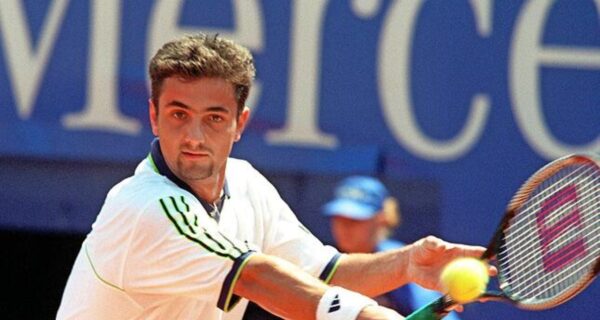Shane Bond, a name synonymous with speed and precision in the world of cricket, has left an indelible mark with his right-arm fast bowling.
Born on June 7, 1975, in Christchurch, Canterbury, New Zealand, Bond’s cricketing prowess and coaching acumen have made him a respected figure in the sport.
Here you can follow Shane Bond’s net worth, salary, career earnings, contract, stats, wife, career overview, and more.
About Shane Bond
Born in the heart of New Zealand’s South Island, Shane Edward Bond’s journey began in Christchurch, a city known for its cricketing solid culture. From a young age, Bond‘s talent was evident, and he quickly became one of the most feared fast bowlers of his era.
Domestic Career
His performances primarily marked Shane Bond’s domestic cricket career for Canterbury in New Zealand domestic cricket.
He made his first-class debut for Canterbury on January 20, 1997, in a match against Central Districts. His fast bowling, with a recorded fastest delivery of 156.4 km/h, made him a significant player in the domestic circuit
In addition to his performances for Canterbury, Bond also played for Warwickshire and Hampshire in English domestic cricket. His debut for Hampshire against the 2007 champions Sussex was particularly memorable, as he recorded figures of 7-66 in the first innings.
International Career
Shane Bond made his Test debut for New Zealand against Australia on November 22, 2001, and his One Day International (ODI) debut followed shortly after, against the same opposition on January 11, 2002. His T20 International (T20I) debut came against South Africa on October 21, 2005.
Bond played 18 Test matches throughout his career, capturing 87 wickets with a best bowling figure of 6/51. In ODIs, he was even more prolific, taking 147 wickets in 82 matches with an impressive best of 6/19. His T20I record includes 25 wickets in 20 matches
One of Bond’s most memorable performances came during the 2003 World Cup, where he took 17 wickets at an average of 17.94, showcasing his skill on the world stage
Bond’s career was marred by injuries, with the most serious being a back problem in 2003 that led to nearly two years out of the game and required surgery. He also faced various issues with his knees, feet, and other body parts. Despite these challenges, Bond’s desire to play and his unwillingness to reduce his intensity on the field were evident.
Coaching Career
After retiring from professional cricket in 2010, Shane Bond didn’t stray far from the pitch, turning his attention to coaching.
He began his coaching career as an assistant with Central Stags before taking on the role of New Zealand’s bowling coach in 2012. His tenure with the national team was marked by significant achievements, including helping the Kiwis reach the World Cup final in 2015
Bond’s coaching career in franchise cricket has been particularly notable. He joined the Mumbai Indians as a bowling coach. During his time with Mumbai Indians, he contributed to the team’s success, helping them secure four IPL titles.
Shane Bond’s Net Worth Details
Shane Bond’s net worth is estimated to be $7 million as of 2025, reflecting his successful career as a cricketer and coach.
His earnings come from his salary as a professional cricketer and coach, endorsements, and other sources.
Salary
Shane Bond earned a significant amount from playing in the IPL for the Kolkata Knight Riders, where he was sold for more than NZ$1 million, which was equivalent to a salary of £340,231.5 (₹ 34,717,500) for the year 2010.
National team salaries for cricketers can vary based on the player’s contract level with the cricket board, the number of matches played, and performance-related bonuses. Top players like Shane Bond, who was a crucial figure in the New Zealand cricket team, would typically be at the higher end of the salary scale during their playing careers.
Career Earnings
| Year | Team | Salary (£) | Salary (₹) |
| 2010 | Kolkata Knight Riders (IPL) | £340,231.5 | ₹ 34,717,500 |
Endorsement
Shane Bond, like many professional athletes, likely had endorsement deals throughout his career.
As a prominent figure in international cricket, it’s plausible that he had deals with sports equipment manufacturers, apparel brands, or other related companies.
Personal Details
| Full Name | Shane Edward Bond |
| Nickname | Bondy, 007 |
| Birth Date | June 7, 1975 |
| Height | 1.85 m (6 ft 1 in) |
| Birthplace | Christchurch, Canterbury, New Zealand |
| Nationality | New Zealander |
| Current Net Worth | $7 Million |
| Relationship Status | Married |
| Wife | Tracey Bond |
| Instagram Profile | @shanebond87 |
Wife
Shane Bond is married to Tracey Bond. They have been together for over 20 years and have three children: two daughters and a son.
They live in Christchurch, New Zealand, where they have reinvented their home for the next decade of family living.
Career Stats
| Format | Matches | Innings | Runs | Highest Score | Batting Average | Wickets | Best Bowling | Bowling Average |
| Test | 18 | 20 | 168 | 41 | 12.92 | 87 | 6/51 | 22.09 |
| ODI | 82 | 40 | 292 | 31 | 16.22 | 147 | 6/19 | 20.88 |
| T20I | 20 | 8 | 21 | 8 | 4.20 | 25 | 3/18 | 21.72 |
| IPL | 8 | 1 | 1 | 1 | 1.00 | 9 | 2/24 | 24.89 |
FAQs
Who is Shane Bond?
Shane Bond is a former New Zealand cricketer born in Christchurch on June 7, 1975. He was a right-arm fast bowler known for his extreme pace and accuracy. Bond is considered one of New Zealand’s best fast bowlers since Richard Hadlee.
What was Shane Bond famous for in cricket?
Bond was famous for his incredibly fast bowling. He could consistently bowl at speeds over 145 km/h and was once recorded bowling at 156.4 km/h against India in the 2003 World Cup. He was also known for his ability to swing the ball both ways and his deadly yorkers.
What were some of Shane Bond’s biggest achievements?
Bond took a hat-trick in Test cricket against Australia in 2001. He’s one of the few bowlers to have taken hat-tricks in all three formats of international cricket. He was also the fastest New Zealander to take 50 wickets in Test matches, doing so in just 12 matches.
How many wickets did Shane Bond take in his international career?
In his international career, Bond took 87 wickets in 18 Test matches, 147 in 82 ODIs, and 25 in 20 T20Is.
Why did Shane Bond’s career seem short despite his talent?
Bond’s career was plagued by injuries, particularly recurring stress fractures in his back. He had surgery in 2004 to try to prevent further injury, but it was only partially successful. These injuries limited his appearances in both international and domestic cricket.
Did Shane Bond play in any T20 leagues?
Bond played in the Indian Premier League (IPL) for the Kolkata Knight Riders in 2010. He also played for the Delhi Giants in the Indian Cricket League, which was considered a rebel league then.
When did Shane Bond retire from cricket?
Bond retired from Test cricket in December 2009 at the age of 34. He announced his retirement from all forms of international cricket on May 14, 2010, after the 2010 ICC World Twenty20.
What did Shane Bond do before becoming a professional cricketer?
Before his international cricket career, Bond worked as a police officer in Christchurch. He quit cricket for a year to join the New Zealand Police but later returned to the sport.
What has Shane Bond done since retiring from cricket?
After retiring, Bond has been involved in coaching. He’s worked as a bowling coach for various teams, including the New Zealand national team and the Mumbai Indians in the IPL. As of the latest information, he’s the bowling coach for the Rajasthan Royals in the IPL.
What’s a unique stat about Shane Bond’s bowling?
Bond has the second-best bowling strike rate of all time in Test match cricket (among bowlers who have bowled a minimum of 2,500 deliveries), behind only George Lohmann. His strike rate was 38.7, meaning he took a wicket roughly every 39 balls bowled.












